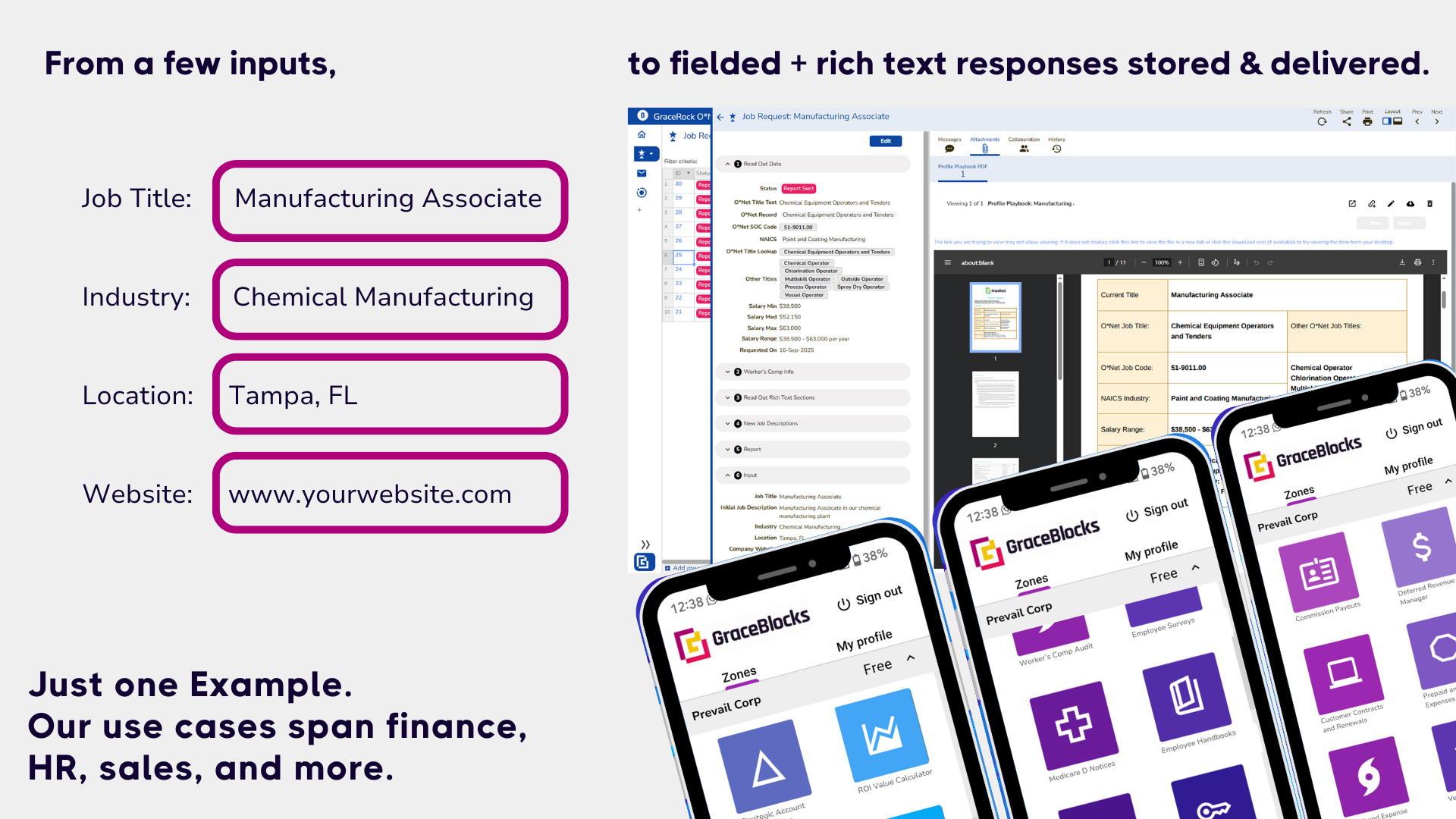


Earlier this month, we started talking about a new initiative at GraceRock: the building of GraceBlocks. We shared that GraceBlocks will be a system for building amazing software, block by block. We then introduced the 10 pillars for a good system of record. In this week’s post, we explore pillar #5 Integration capabilities to support data exchange through open APIs and connectors with other systems so the data is easily extensible.
When it comes to recruiting, the ways a company can leverage their job and candidate data is endless, if only the data were more malleable. There is nothing more frustrating than trapped data, but it happens all the time. For example, if you’ve ever been involved in incorporating robust assessment, scheduling, interviewing, background checking, diversity inclusion capabilities, or deep recruitment marketing capabilities, or hires ported to your HRMS into your talent acquisition strategy, chances are that you needed to manage an integration project to make this happen. That project involved an in-depth review of fields and data mappings. It likely also required enlisting highly skilled technical resources to build the integration. For consulting firms like GraceRock, the fact that this is so complex is part of how we make our living. But, believe me when I say, we see a better way to solve this problem.
In fact, the reality in HR is distinct in having this challenge today. Be it by HR tech provider strategy or technical limitation (both of which are sorry excuses in the year 2020), for some reason most enterprise HR technology is just not that fluid. HR was originally a pioneer in SaaS, but that’s not the case today, where open frameworks exist like Zapier to let a non-coder build integrations between systems (like Google, SalesForce, Zendesk, Sendgrid, and Calendly and 1000’s of other SaaS systems). The number of HR technology options you’ll find in this arena can be counted on one hand and they are mostly focused on the SMB (nods here go to Workable, Crelate, BambooHR, Greenhouse).
For GraceBlocks, the basic premise is that the data you store will be like water and can flow anywhere it needs to, with ease. This means, for every Block built on GraceBlocks, the data is not only automatically interchangeable with other the Blocks you build, but each block gets its own personal auto-generated API, keys included.
When it’s easy, the freedom to extend data through integration gives life to untold possibilities. Consider using integration to accomplish the following: publish items (like jobs complete with tracking codes) to a website, analyze your hires via dashboard, or adding/updating scheduled interviews for candidates. Today these ideas may be painful concepts. But the goal with GraceBlocks is data fluidity at a level that converts an age-old frustration into an opportunity for continued innovation that is at pace with HR’s business peers in Sales, Marketing, Finance, Operations and IT.
We also know this takes time, and APIs alone do not solve all problems. Some folks read the word API as a slap in the face because older systems just aren’t built for them. As important as the API’s might be, simple copy and paste and easy download/send options can give the cave-dwellers among us the option to leverage GraceBlocks too. As we look at our roadmap, we’re starting in the cave and will then API our way out into the light to fully realize this pillar over time.
Want to stay informed?
Request early access here. And we’ll keep you posted as we continue building GraceBlocks!
Read about the other pillars here:
- 9 Pillar’s summary post
- Pillar #1: Security
- Pillar #2: Ease
- Pillar #3: Search
- Pillar #4: Collaboration
- Pillar #5: Integration
- Pillar #6: Control
- Pillar #7: Tracking
- Pillar #8: Workflow
- Pillar #9: Intelligence



.png)







